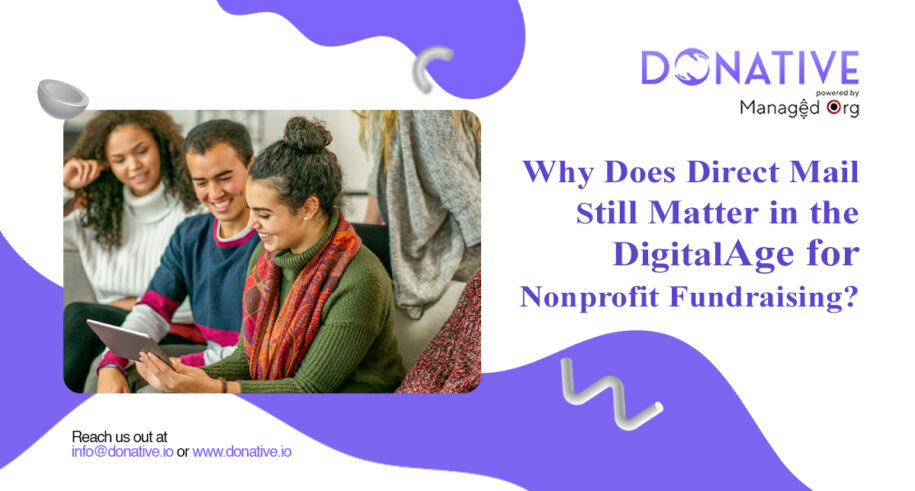Today’s world is being dominated by digitized communication. Most of us think that conventional forms of outreach, such as direct mail are outdated. But, when it comes to nonprofit fundraising, direct mail holds a significant importance. Even though there is an increase in the use of social media platforms and email marketing, direct mail offers various advantages. These benefits help nonprofit organizations to accomplish their fundraising goals.
Tangibility and Personal Touch
One of the primary benefits of direct mail is its physical nature. Direct mail creates a tangible connection between the nonprofit and its potential donors. And this is quite different from sending emails or circulating social media posts. Such a physical touch can create miraculous impacts as recipients can easily remember a letter or postcard that they hold in their hands. It has more impact than an email that usually gets lost in their overflowing inbox.
Direct mail also enables a personal touch that is missing in digital communications. Elements such as personalized letters or handwritten notes prove that the nonprofit organization has taken enough effort and time to reach out to potential donors individually. Such a personalized approach can encourage the creation of stronger and more emotional connections.
Targeted Outreach
Direct mail helps nonprofit organizations to conduct highly targeted outreach. The nonprofits use demographic, geographic locations, and psychographic data to customize their messages to various donor base segments. This strategy ensures that the right people receive the right message. It enhances the concept of donor engagement and donations.
On the other hand, digital platforms use algorithms. But at times, these algorithms can unpredictably filter out messages. It implies that the intended message might not reach the targeted audience. Direct mail assures that the message is delivered directly to the potential donor’s physical mailbox.
Complementing Digital Strategies
In today’s era, where digital strategies hold vital importance, direct mail should not be considered as a complementary tool. Rather, it should be viewed as a competitor. Integrating direct mail with various digital campaigns can enhance the multi-channel approach. It spreads the message across various platforms, without fail. For example, direct mail can facilitate the donors to visit the website of a nonprofit and sign up for email or newsletters.
Higher Response Rates
A few research studies have shown that direct mail enjoys a higher response rate when compared to email marketing strategies. An average email campaign usually generates a response rate of nearly 1%. Whereas, direct mail can create a rate of 5% or above. Such a higher engagement level can create more donation conversions.
Trust and Credibility
In the existing digital era, we come across numerous instances of digital fraud and spam. People are becoming more skeptical of digital interactions. Direct mail is considered to be more reliable and trustworthy. A well-created piece of direct mail, embedded with professionalism, can lend legitimacy to the fundraising appeal of a nonprofit. It gives a comfortable space for the potential donors.
Conclusion
Despite the dominance of digital technologies, direct mail remains an invaluable tool for nonprofit fundraising. It is often considered a precious component of a comprehensive fundraising plan. By integrating the innovative benefits of direct mail, nonprofit organizations can improve their outreach efforts.

